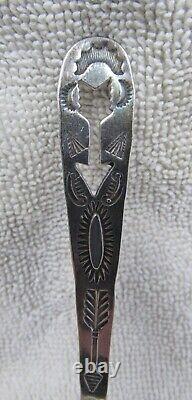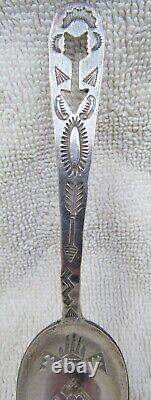
- Home
- Artisan
- Bell Trading Post (7)
- Fred Harvey (16)
- Fred Harvey Era (36)
- Handmade (6)
- Ihmj (2)
- Jane Popovich (2)
- Maisels (2)
- Maisels Trading Post (3)
- Mystery Makers Mark (3)
- Native American (24)
- Navajo (48)
- Navajo Indian (7)
- Not Signed (3)
- Please See Photos (3)
- Silver Arrow (7)
- Tch (3)
- Unknown (160)
- Unknown Maker (3)
- Unmarked (6)
- Unsigned (28)
- Other (4198)
- Brand
- Arrow (28)
- Bell (14)
- Bell Trading (7)
- Bell Trading Post (60)
- Estate (13)
- Fred Harvey (486)
- Fred Harvey Era (825)
- Fred Harvey Jewelry (10)
- Handmade (95)
- Maisels (9)
- Maisels Trading Post (23)
- Native (6)
- Native American (587)
- Nativo Arts (7)
- Navajo (14)
- Old Pawn (46)
- Silver Arrow (49)
- Silver Products (18)
- Sterling (29)
- Unknown (5)
- Other (2236)
- Material
- .925 Sterling Silver (6)
- Beads (4)
- Coin Silver (9)
- Coral (6)
- Gemstone (72)
- Gemstone, Metal (4)
- Glass (4)
- Metal (29)
- Metal, Stone (8)
- Mixed Materials (7)
- Silver (229)
- Silver And Turquoise (13)
- Sterling Silver (388)
- Stone (291)
- Stone, Metal (4)
- Turquoise (34)
- Turquoise And Silver (4)
- Turquose (5)
- Unknown (5)
- Wood (43)
- Other (3402)
- Metal
- Origin
- Vintage
Navajo Indian Fred Harvey Era Whirling Logs Rt 66 Sterling Silver Souvenir Spoon










Being offered is a Navajo Indian made sterling silver souvenir spoon. The spoon has a southwest Indian style with the classic Fred Harvey era hand die stamped Native designs including a whirling log in the bowl.
These were usually made at Native workshops or jobbers for the early tourist trade to the southwest. The spoon shows age related tarnishing and is in good condition with no damage noted. 5 1/2" long by 1 1/4" wide at the bowl. The earliest known swastika was seen about 10,000 years ago.
The intricate pattern of joined swastikas was found on a late paleolithic figurine of a bird, carved from mammoth ivory, found in Mezine, Ukraine. The word'swastika' derives from an Asian Indian Sanskrit word, in which the meaning of the swastika stands for universal welfare. "Swasti" means well-being of one and all and "ka" means symbol.
The swastika is one of the most ancient of all symbols and used as a symbol for peace, life and good luck. In the Western world, it was a symbol of auspiciousness and good luck until the 1930s, when it was hijacked by the German Aryan party. I find the taking of an Indian symbol despicable, and chose not to mention their name.The swastika motif is found in some traditional Native American art and iconography. Historically, the design has been found in excavations of Mississippian-era sites in the Ohio and Mississippi River valleys.
It is also widely used by a number of southwestern tribes, most notably the Navajo, and plains nations such as the Dakota. The Aryan icon is an inverted version of the traditional American Indian symbol, which usually features the arms pointing counterclockwise. Before the 1930s, the symbol for the 45th Infantry Division of the United States Army was a red diamond with a yellow swastika, a tribute to the large Native American population in the southwestern United States. It was later replaced with a thunderbird symbol. The swastika is a Navajo symbol for good luck, also translated to whirling log.
The symbol was used on state road signs in Arizona. In the late 19th and early 20th centuries, the swastika symbol became established in Western cultures, especially with the Navajo culture, as a good luck or good fortune symbol, and was used in Native healing ceremonies. The Navajos incorporated the swastika into their rugs, jewelry, and art.
Arizona's indigenous Pima and Maricopa people wove them into their baskets and painted them onto their pots. The swastika's meaning does seem to be similar across cultures, generally denoting abundance and prosperity and referring to the four cardinal directions. Please feel free to contact me with any questions about my items.Please let me know ahead of time. I will try my best to get the item out sooner.

